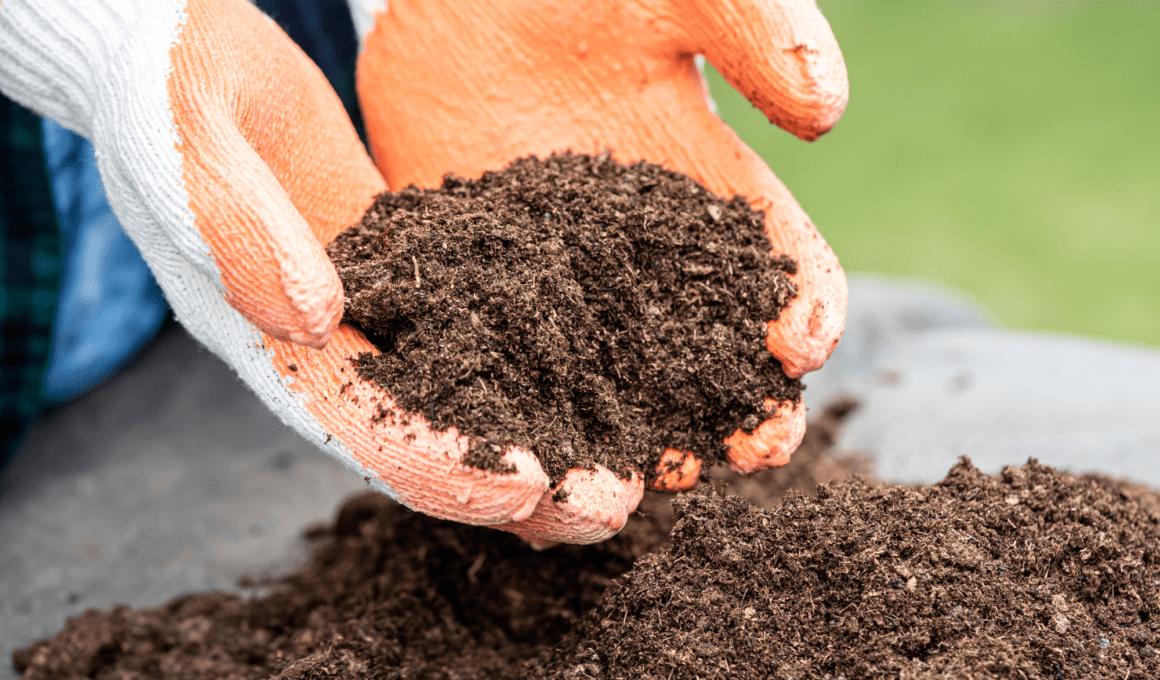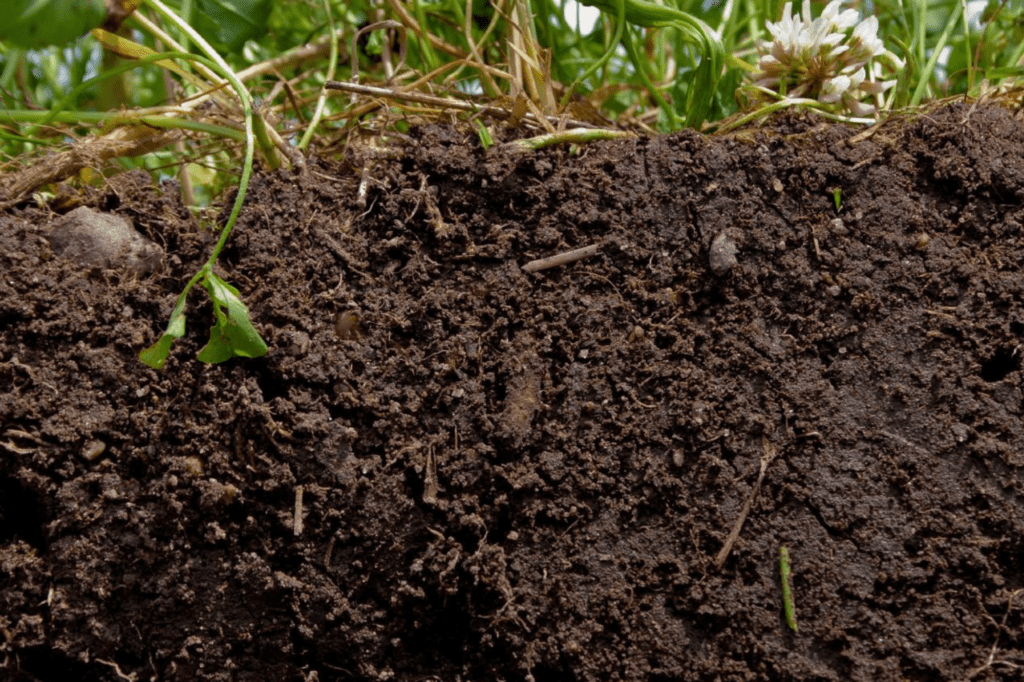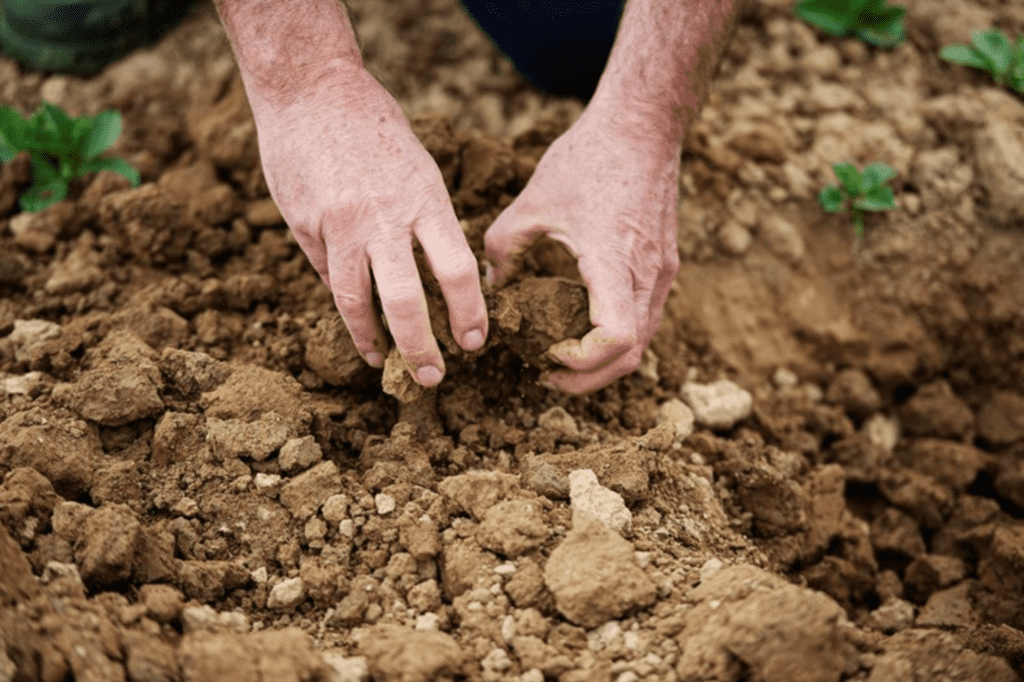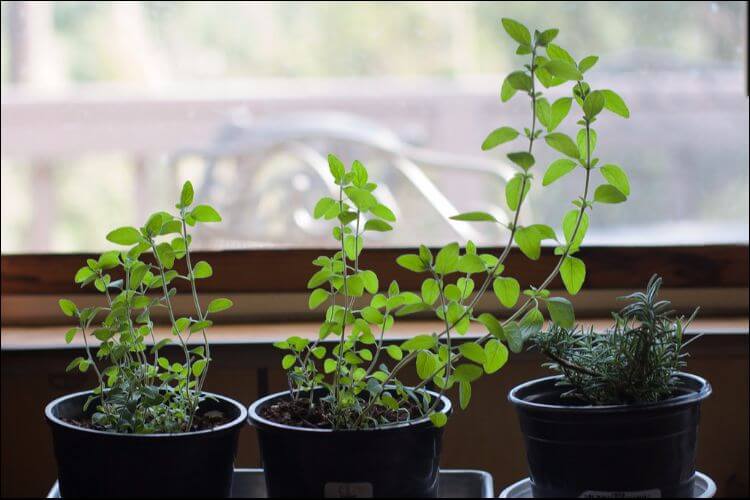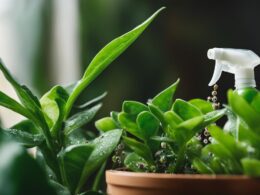Are you struggling with waterlogged soil in your garden or yard? Don’t worry, we’ve got you covered! In this article, we will guide you through simple and effective steps to improve your waterlogged soil and create a safer environment for your plants.
First, we’ll help you understand the causes of waterlogged soil and how it can affect your plants’ health.
Then, we’ll show you how to assess your soil’s drainage capacity, as this is crucial for preventing waterlogging.
Next, we’ll delve into methods to improve soil structure, which will enhance drainage and promote healthier plant growth.
We’ll also provide you with practical solutions to implement proper drainage systems, ensuring excess water is efficiently removed from your soil.
Additionally, we’ll share tips on adjusting your watering practices to prevent waterlogging and choosing water-tolerant plants that can thrive in damp conditions.
We’ll even introduce you to the concept of rainwater harvesting, a sustainable way to manage excess water.
Finally, we’ll emphasize the importance of regular maintenance and monitoring to ensure your soil remains well-drained and your plants stay safe.
By following our expert advice, you’ll soon enjoy a thriving garden without the worries of waterlogged soil. Let’s get started!
Quick Summary
- Improve soil structure by adding organic matter and creating drainage channels to prevent waterlogging.
- Assess soil drainage capacity by considering soil texture, percolation rate, topography, and artificial drainage systems.
- Implement drainage solutions like underground pipes or raised beds to redirect excess water.
- Adjust watering practices to avoid overwatering and promote better drainage.
Understand the Causes of Waterlogged Soil
To improve waterlogged soil, you need to understand the causes of it. Waterlogging occurs when excess water accumulates in the soil, leading to poor drainage. This can happen due to heavy rainfall, inadequate soil structure, or compacted soil. Understanding the causes will help you prevent waterlogging and ensure the safety of your plants.
One of the main causes of waterlogged soil is heavy rainfall. When there’s too much rain in a short period, the soil becomes saturated and can’t absorb the excess water.
Another cause is inadequate soil structure. If the soil is heavy in clay or has a high clay content, it can become compacted and prevent water from draining properly.
Waterlogged soil can have detrimental effects on plant growth. The excess water limits the availability of oxygen to the roots, leading to root rot and poor nutrient uptake. This can result in stunted growth, wilting, and even death of the plants.
To prevent waterlogging, you can improve soil structure by adding organic matter such as compost or well-rotted manure. This’ll help improve drainage and create a healthier soil environment for your plants. Additionally, you can create drainage channels or install a drainage system to redirect excess water away from the soil.
By understanding the causes of waterlogged soil and taking preventive measures, you can ensure the safety and well-being of your plants.
Assess the Soil’s Drainage Capacity
Assessing the soil’s drainage capacity helps in understanding the potential for excess water retention. This is crucial when aiming to improve soil fertility and prevent waterlogging.
Here are four key factors to consider:
- Soil Texture: Sandy soils typically have better drainage capacity compared to clay soils. Assessing the soil texture will give you a better idea of its drainage potential.
- Percolation Rate: The speed at which water moves through the soil is an important indicator of its drainage capacity. Conduct a percolation test to determine how quickly water infiltrates the soil.
- Topography: Evaluate the slope of the land to determine if water is likely to accumulate in certain areas. Leveling or adding slopes can help improve drainage and prevent waterlogging.
- Artificial Drainage Systems: Installing drainage tiles or pipes can significantly enhance soil drainage. These systems help remove excess water from the soil, preventing waterlogging and improving overall soil health.
By thoroughly assessing the soil’s drainage capacity, you can identify areas that need improvement and take appropriate measures to prevent waterlogging. Remember, maintaining proper soil drainage is not only essential for improving soil fertility but also for ensuring the safety of your plants and preventing water-related issues.
Improve Soil Structure
Enhancing the structure of your soil can greatly improve its fertility and promote healthier plant growth. When dealing with waterlogged soil, it’s important to improve its structure to allow for proper aeration. This will help prevent water from pooling and promote better drainage.
One way to improve soil structure is by using soil amendments. Adding organic matter, such as compost or well-rotted manure, can help improve soil structure by increasing its ability to hold water while also improving drainage. These amendments also help create pore spaces in the soil, allowing for better aeration.
Another method to improve soil structure is by avoiding compaction. Compacted soil prevents water from draining properly and can lead to waterlogging. Avoid walking or driving on wet soil, as this can cause compaction and further worsen the problem. Instead, wait until the soil has dried out before working on it.
Proper aeration is crucial for improving the structure of waterlogged soil. Aerating the soil using a garden fork or aerator can help create channels for water to drain through and allow air to reach the plant roots. This will help prevent waterlogging and promote healthier plant growth.
By incorporating these techniques, you can improve the structure of your waterlogged soil, promote better drainage, and create a healthier environment for your plants.
Implement Drainage Solutions
One effective way to address the issue of water pooling in your garden is by implementing drainage solutions. By installing underground pipes, you can effectively redirect excess water away from your garden, preventing waterlogging and potential damage to your plants. This solution is especially useful if you have a large garden or are dealing with heavy rainfall.
Creating raised beds is another great option for improving waterlogged soil. By elevating the soil, you allow for better drainage and aeration, reducing the risk of water pooling. Raised beds can be built using various materials such as wood, stone, or bricks, and can be customized to fit your garden’s needs.
Advantages of installing underground pipes:
- Prevents water pooling in your garden
- Protects your plants from waterlogging damage
Benefits of creating raised beds:
- Improves drainage and aeration in the soil
- Reduces the risk of water pooling and root rot
By implementing these drainage solutions, you can ensure the safety of your garden and enjoy a healthier, thriving landscape. So why wait? Start taking action today to improve your waterlogged soil.
Adjust Watering Practices
To address the issue of water pooling in your garden, you can adjust your watering practices to ensure proper drainage and prevent damage to your plants. By implementing these simple changes, you can improve the condition of your waterlogged soil and create a safer environment for your plants to thrive.
One effective way to improve soil drainage is by adjusting the frequency and amount of water you provide to your plants. It’s important to avoid overwatering, as this can lead to waterlogged soil. Instead, water your plants deeply but less frequently. This allows the soil to dry out between waterings and promotes better drainage.
Another method to improve waterlogged soil is through soil aeration. By introducing air pockets into the soil, you can help water drain more efficiently. One way to achieve this is by using a garden fork or aerator to create small holes in the soil. This allows oxygen to reach the roots and encourages better drainage.
In addition to adjusting your watering practices and promoting soil aeration, incorporating soil amendments can also help improve drainage. Adding organic matter, such as compost or well-rotted manure, can help improve soil structure and promote better water movement. These amendments can also enhance the soil’s ability to retain moisture without becoming waterlogged.
By implementing these adjustments to your watering practices and incorporating soil aeration and amendments, you can improve the drainage of your waterlogged soil and create a safer environment for your plants to grow. Remember, proper drainage is crucial for plant health and overall garden safety.
Choose Water-Tolerant Plants
When it comes to creating a garden that can withstand excessive moisture, opt for plants that thrive in wet conditions. Choosing the right plants can make a big difference in improving waterlogged soil. Look for drought-resistant plants, as they’re more likely to tolerate excessive moisture. These plants have adapted to survive in areas with limited water supply, making them a perfect choice for waterlogged soil.
One option is to consider hydroponic gardening. This method involves growing plants in water instead of soil. Hydroponic systems provide better water drainage and aeration, which can help improve waterlogged soil conditions. Additionally, hydroponic plants tend to have a higher tolerance for excessive moisture. You can easily find hydroponic kits and systems available on the market, making it a convenient option for those looking to improve their waterlogged soil.
When selecting plants for your waterlogged garden, make sure to research the specific water requirements of each plant. Look for plants that can handle wet conditions and have a good track record of surviving in waterlogged soil. By choosing water-tolerant plants and incorporating hydroponic gardening techniques, you can create a beautiful and thriving garden even in areas with excessive moisture.
Implement Rainwater Harvesting
Implementing rainwater harvesting is a great way to maximize water resources in your garden, ensuring a sustainable and efficient use of water. Not only does it help in improving waterlogged soil, but it also helps in conserving water and reducing your reliance on external water sources.
Here are a few steps to successfully implement rainwater harvesting:
- Rainwater collection: Set up a rainwater collection system by installing rain barrels or cisterns. Place them strategically to collect rainwater directly from roof gutters and downspouts. Make sure to use screens or filters to prevent debris from entering the storage tanks.
- Water storage: Once the rainwater is collected, it needs to be stored properly. Choose storage tanks or barrels that are sturdy and can hold a sufficient amount of water. It’s important to keep the tanks covered to prevent evaporation and to maintain the quality of the stored water.
By implementing rainwater harvesting, you can ensure a constant supply of water for your garden, even during dry periods. This method not only helps in improving waterlogged soil but also promotes sustainability and reduces your water bills. Remember to always follow safety guidelines and consult professionals if needed to ensure a successful rainwater harvesting system.
Regular Maintenance and Monitoring
Regular maintenance and monitoring is essential to keep your rainwater harvesting system functioning effectively and to ensure the longevity of your water storage tanks and barrels.
When it comes to improving waterlogged soil, it’s important to understand the impact it can have on plant health. Waterlogged soil can lead to root rot and nutrient deficiencies, which can ultimately result in stunted growth and even death of your plants.
To address this issue, it’s crucial to regularly test your soil to determine its composition and moisture content. Soil testing will help you understand the specific needs of your plants and allow you to make necessary adjustments to improve drainage and nutrient levels. This can be done by using a soil testing kit or by seeking professional assistance.
In addition to soil testing, it’s important to monitor the moisture levels in your soil. Overwatering can contribute to waterlogged soil, so it’s essential to maintain a balance and only water your plants when necessary. Regularly check the moisture levels of your soil by inserting your finger about an inch deep into the soil. If it feels moist, hold off on watering until it dries out.
By prioritizing regular maintenance and monitoring, you can ensure the health and longevity of your plants. Don’t neglect the importance of soil testing and monitoring moisture levels to improve waterlogged soil and create a safe and thriving garden.
Frequently Asked Questions
Can waterlogged soil cause damage to plants or crops?
Yes, waterlogged soil can cause damage to plants and crops. It restricts oxygen supply, leading to root rot and stunted growth. To prevent waterlogging, ensure proper drainage, use raised beds, and choose plants that tolerate wet conditions.
Are there any organic methods to improve soil drainage?
To improve soil drainage naturally, you can try using organic methods and natural solutions. These can help prevent waterlogging and ensure the safety of your plants and crops.
How often should I water plants in waterlogged soil?
To maintain plant health in waterlogged soil, water less frequently to prevent further saturation. Overwatering can suffocate roots and promote fungal diseases. Ensure proper drainage and monitor soil moisture levels to avoid overwatering.
What are some common signs of waterlogged soil?
To identify waterlogged soil, look for signs like water pooling on the surface, slow drainage, and plants wilting or turning yellow. To prevent waterlogging, ensure proper drainage, avoid overwatering, and use raised beds or containers.
Can waterlogged soil lead to the growth of harmful bacteria or fungi?
Yes, waterlogged soil can lead to the growth of harmful bacteria and fungi. It can affect groundwater quality. To prevent waterlogging in soil, ensure proper drainage, avoid overwatering, and use organic matter to improve soil structure.
Conclusion
In conclusion, improving waterlogged soil is essential for healthy plant growth and preventing water damage. By understanding the causes of waterlogging and assessing the soil’s drainage capacity, you can take steps to improve soil structure and implement drainage solutions.
Adjusting watering practices and choosing water-tolerant plants are also important. Additionally, implementing rainwater harvesting and regular maintenance and monitoring can help maintain optimal soil conditions.
With these strategies, you can effectively improve waterlogged soil and create a thriving garden or landscape.





